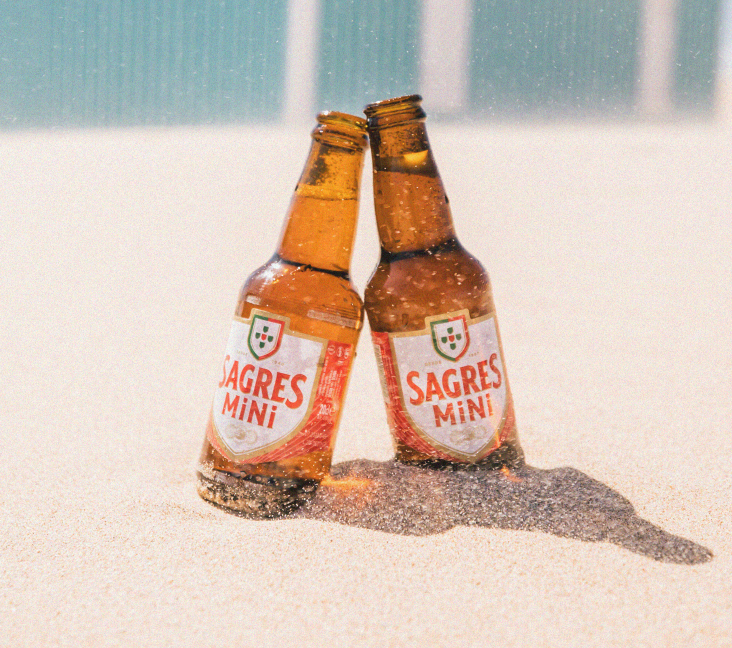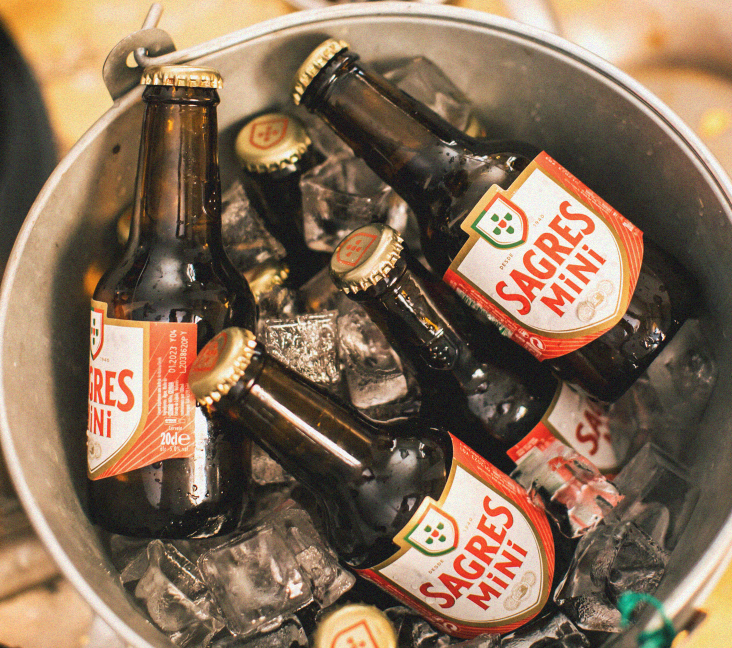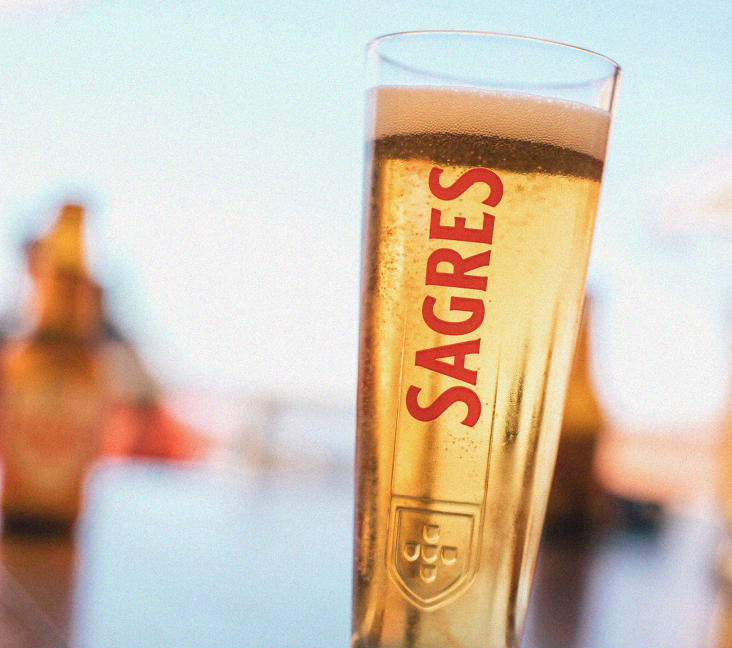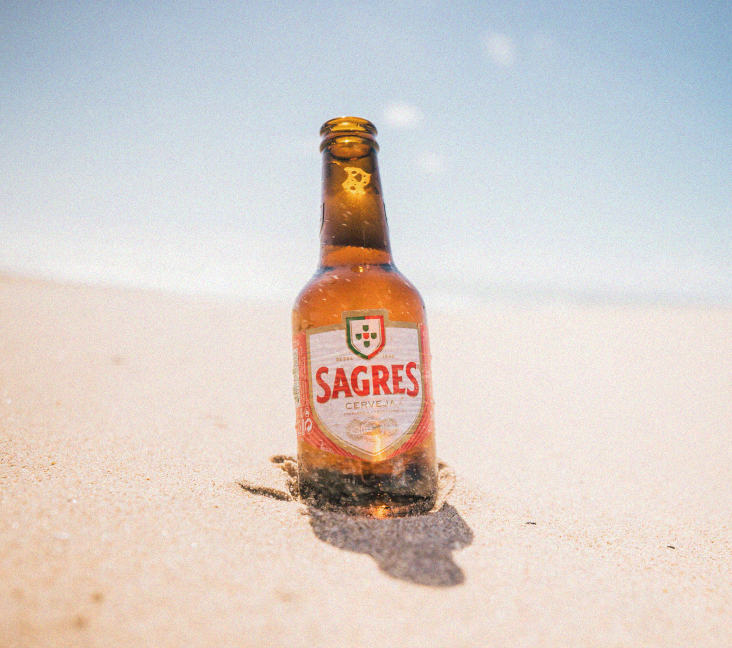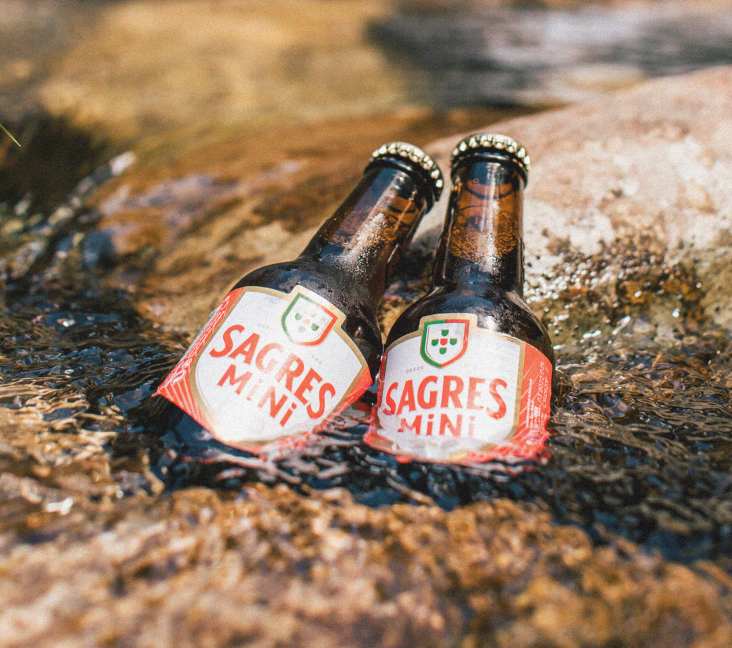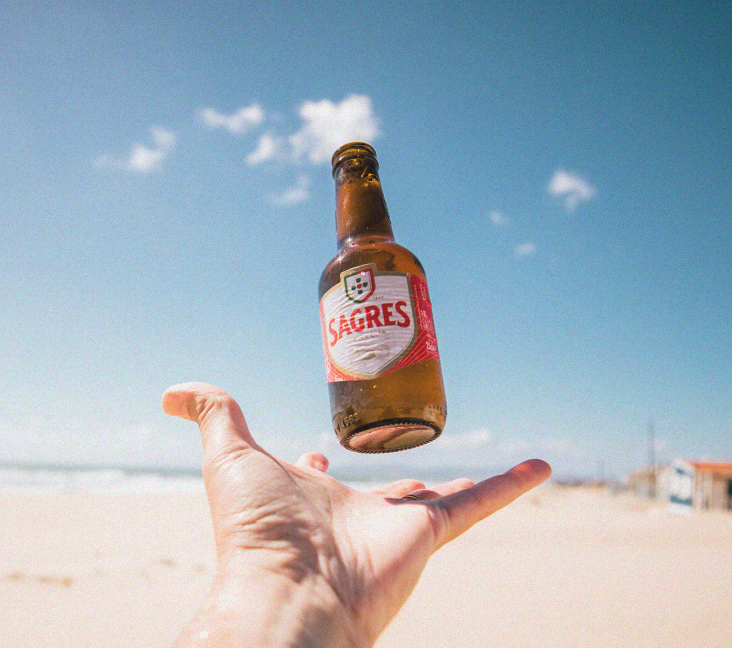All you need to know about beer
A word to the wise is enough, but for those who want to learn more beer jargon, here you go.
WATER
The main ingredient - about 90% of beer is actually water. Water also plays a massive role in defining the flavour of a beer.
COOLING
The wort is cooled at optimal temperatures so that the yeast can be inoculated and begin the fermentation process.
"BEJECA"
"Bejeca" really just means "beer". A popular and affectionate way of referring to beer.
"FINO"
"Fino" is a draught beer, poured directly into the glass at a perfect temperature. In the centre and south of Portugal, it is called "imperial".
"FRESQUINHA"
"Fresquinha" is a synonym for "beer". A popular and familiar way of referring to beer, used especially in summer.
"IMPERIAL"
"Imperial" is a draught beer, poured directly into the glass at a perfect temperature. In the north of Portugal, it is called "fino".
"JOLA"
"Jola" is a synonym for "beer". A popular and affectionate way of referring to beer.
"MINI"
The "Mini" is a 20 cl and 25 cl bottle of beer, appreciated all over the country.
BOILING
In the boiling phase, the wort is heated to a temperature of almost 100° C, which sterilises it and gives it the final characteristics in terms of extract and colour. Hops are also added at this stage, so that the high temperature generates the typical bitterness of the beer. In some varieties of beer, aroma hops are also added, in this case at the end of the boiling phase, before the wort goes through a cooling process.
BREWING
This stage is divided into several steps – mashing, lautering, boiling and cooling, which is when we obtain the wort that will later be fermented.
MALT
This ingredient results from the germination of the grains used to manufacture beer. It is responsible for the colour of the beer and it also influences its flavour.
MALTING
Malting is based on controlled germination of grains, mainly barley, to optimise their use in beer production. In this process, the enzymes are naturally activated when the grains are soaked in water, imitating the spring rain, which is nature’s way of telling the seeds it's time to start germinating. The enzymes do their job during germination, releasing the starch and protein required for good fermentation. Lastly, the now malted grains are dried, which is when they develop their final colours and aromas. This process also allows them to be stored. In some cases, toasting the grains differentiates them even further. This process provides a wide variety of colours, aromas and flavours that can go from caramel to roasted or even dried fruit. Barley is not the only cereal grain that can be malted. Wheat, for example, is widely used in Witt or Weissbier beers.
MASHING
During mashing, the milled grains are mixed with water at a controlled temperature for a controlled amount of time in order to allow the enzymes to once again play their important role, converting the starch into smaller sugars and the protein into amino acids.
MILLING
The milling of the grains releases the soluble starch and protein.
FERMENTATION
Fermentation is a process through which the yeast converts the sugar molecules of the wort into alcohol, carbon dioxide and aromas.
FILLING
This is it. The final step before the beer reaches your glass - the filling. Before it is poured into bottles, cans or barrels, the beer is pasteurised. To guarantee the freshness and flavour of the beer, it has absolutely no contact with air during the whole process, so that its flavours and aromas remain refreshing.
FILTRATION
The wort is filtered to remove any remaining grain husks. After the stand period, the beer is filtered, becoming transparent and brilliant. Filtration is the last stage but one, and the beer is almost inside the glass. Not all types of beer are filtered – the presence of natural turbidity can be a characteristic of the style itself, for instance, in the case of wheat beers.
YEAST
Yeast is the set of microorganisms responsible for fermenting the wort, converting its sugars into alcohol and carbon dioxide and also giving beer its distinctive aromas, such as fruity and spicy aromas.
HOPS
Hops, from the Humulus Lupulus plant, is one of the main ingredients of beer, giving it aroma, bitterness and acting as a natural preservative.
OKTOBERFEST
Oktoberfest is an important occasion for all beer lovers.
In each fermentation method or beer family, there are several styles, which all have different organoleptic and production characteristics. There are more than 160 different beer styles, can you believe it?
ALE
Ale is fermented at a temperature of between 15 and 25° C. For example, India Pale Ale (IPA).
AMBER LAGER
Amber Lager is a medium-bodied beer, amber-coloured, crystalline, with a well-formed head. Its sweet malty notes contrast with the citric and herbal notes of the hops. Its marked bitterness is counteracted by the aromatic component of the hops.
BOCK
Bock is a dark beer, moderately bitter, with a higher alcohol content (6 to 7%). It has coffee, roasted and caramel aromas.
DRY STOUT
Dry Stout is a full-bodied beer with a velvety texture, a dark colour – thick brown – and a dense and creamy sandy-coloured head. It has toasted notes of grains, malted beer, a pronounced sourness and a moderate bitterness.
INDIA PALE ALE
India Pale Ale is a type of beer with a dark golden to orange colour. Hops are very pronounced, which translates into fruity, tropical, citric, herbal, floral or spicy notes. The bitter mouthfeel contrasts with the aromatic notes of hops.
LAGER
Lager is a beer obtained through fermenting at lower temperatures of between 7 and 14° C. For example, Pilsner beer, the most popular style in the world.
PILSNER
Pilsner is a Lager beer made from a malt type called Pilsen, in which the malt raw materials are balanced. With a rich, complex aroma and a fruity touch, this beer has a low alcohol content (4 to 5%).
MÄRZEN
Märzen is a German Lager, malted, with a clean malty, roasted and toasted flavour. With a moderate bitterness, this beer also offers notes of caramel from the sweetness of the malt. The bitter taste is balanced and its dry feeling lingers in the mouth, making us yearn for another beer. The optimal temperature to drink it is between 6 and 10° C. The German word "März" means "March", and there is an interesting history behind this. In the 19th century, the people in Bavaria began producing a beer using the remains of hops and malt before the beer production stopped during the summer. The traditional Märzen was stored in the Alps in March and fermented at low temperatures. In October, it was ready to drink. Incidentally, in October 1810, Prince Ludwig from Bavaria married Princess Therese from Bavaria and Märzen was just perfect to drink. The celebration lasted five days, and was the first Oktoberfest.
SCHWARZBIER
Schwarzbier is a medium-bodied beer with a dark brown colour, and a thick and creamy sandy-coloured head. Its roasted malt aromas have notes of roasted coffee and black chocolate. Its bitterness is moderate.
STOUT
Stout is a dark beer, full-bodied, with a thick and creamy head.

What's your favourite type of beer?
Do try them all, but first of all, here’s some information about the different types of beer.
